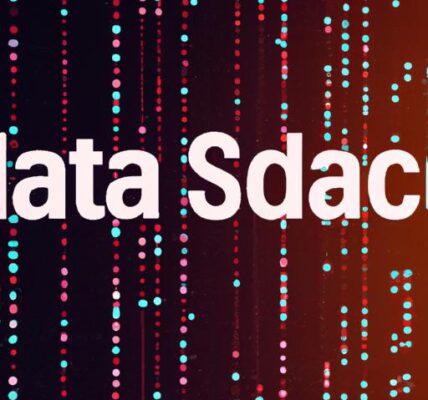In the digital landscape, where data reigns supreme, the concept of data federation emerges as a beacon of innovation and efficiency. But what exactly is data federation? Simply put, data federation is the seamless integration and consolidation of data from multiple sources, allowing organizations to access and analyze information in a unified manner. This approach revolutionizes data management, offering a holistic view of the data landscape.
In the fast-paced world we live in today, data federation plays a pivotal role in enabling organizations to harness the power of their data assets. By breaking down data silos and facilitating data interoperability, data federation empowers businesses to make informed decisions, drive operational efficiency, and gain a competitive edge in the market. Embracing data federation is not just a choice; it is a strategic imperative for organizations looking to thrive in the digital age.
How Data Federation Works
Explanation of Data Federation Process
Data federation operates as a sophisticated data integration technique that harmonizes disparate data sources into a unified platform. Through a virtualized approach, data federation seamlessly connects and accesses data from various repositories without the need for physical data movement. This dynamic process ensures real-time access to up-to-date information, enabling organizations to make data-driven decisions swiftly and efficiently.
Benefits of Using Data Federation in Data Management
The adoption of data federation brings forth a multitude of advantages in the realm of data management. By breaking down data silos and enabling the consolidation of information from diverse sources, organizations can gain a comprehensive view of their data landscape. This unified perspective enhances decision-making capabilities, fosters collaboration across departments, and drives operational efficiency. Moreover, data federation empowers businesses to respond swiftly to market changes, adapt to evolving trends, and stay ahead of the competition in today’s fast-paced business environment.
Key Features of Data Federation
Integration of Multiple Data Sources
Data federation excels in its ability to seamlessly integrate data from diverse sources, including databases, applications, and cloud repositories. By harmonizing data from disparate sources, organizations can gain a comprehensive view of their information landscape, enabling more informed decision-making and enhanced operational efficiency.
Real-time Data Access and Analysis
One of the standout features of data federation is its support for real-time data access and analysis. With data federation, organizations can access and analyze data in real-time, enabling timely insights and proactive decision-making. This real-time capability empowers businesses to respond swiftly to changing market dynamics and capitalize on emerging opportunities.
Improved Data Security and Governance
Data security and governance are paramount in today’s data-driven world, and data federation offers robust mechanisms to ensure the protection and integrity of data. By centralizing data access and control, data federation enhances data security measures, mitigates risks of data breaches, and ensures compliance with regulatory requirements. This heightened focus on data security and governance instills confidence in stakeholders and fosters a culture of trust and accountability within organizations.
Use Cases of Data Federation
Business Intelligence and Analytics
In the realm of business intelligence and analytics, data federation serves as a game-changer, allowing organizations to consolidate and analyze data from diverse sources seamlessly. By leveraging data federation, businesses can gain valuable insights, identify trends, and make data-driven decisions with precision. From market analysis to performance tracking, data federation empowers organizations to extract actionable intelligence from their data assets.
Data Virtualization in Cloud Computing
Data virtualization in cloud computing relies on the principle of data federation to enable seamless access to dispersed data sources across cloud environments. By employing data federation techniques, organizations can unify their data resources in the cloud, facilitating real-time data access and analysis. This approach not only enhances data agility and flexibility but also optimizes cloud resource utilization, driving operational efficiency and cost savings.
Data Integration in IoT Applications
In the realm of Internet of Things (IoT) applications, data integration is crucial for connecting and analyzing data streams from interconnected devices. Data federation plays a pivotal role in IoT ecosystems by enabling the integration of heterogeneous data sources, ensuring data consistency and interoperability. By implementing data federation in IoT applications, organizations can unlock the full potential of their IoT data, driving innovation, and enhancing user experiences.
Challenges and Considerations in Implementing Data Federation
Data Compatibility and Consistency Issues
One of the primary challenges in implementing data federation is ensuring compatibility and consistency across diverse data sources. Different data formats, structures, and quality standards can pose significant hurdles in achieving seamless data integration. Addressing these issues requires robust data mapping and transformation processes to harmonize disparate data sets and ensure accurate insights.
Performance and Scalability Concerns
As organizations scale and data volumes grow exponentially, performance and scalability become critical considerations in data federation implementations. Ensuring that data retrieval, processing, and analysis remain efficient and responsive in the face of increasing data complexity is essential. Optimizing query performance, leveraging caching mechanisms, and scaling infrastructure resources are key strategies to mitigate performance bottlenecks and support business needs.
Data Privacy and Compliance Regulations
With data privacy regulations becoming more stringent and complex, ensuring compliance in data federation processes is paramount. Safeguarding sensitive information, maintaining data governance practices, and adhering to regulatory requirements such as GDPR and CCPA are non-negotiable aspects of data federation implementations. Implementing robust data security measures, encryption protocols, and access controls are essential to protect data privacy and maintain regulatory compliance.
Conclusion
In conclusion, data federation stands as a cornerstone of modern data management, offering organizations a pathway to unlock the full potential of their data assets. By seamlessly integrating data from diverse sources and providing a unified view of information, data federation enables businesses to drive innovation, enhance decision-making, and stay ahead in a fiercely competitive landscape. As we navigate the data-driven world, embracing data federation is not just a choice but a strategic imperative for organizations seeking to thrive and succeed in the digital age. Stay ahead of the curve, harness the power of data federation, and pave the way for a future where data is not just information but a catalyst for transformation.
